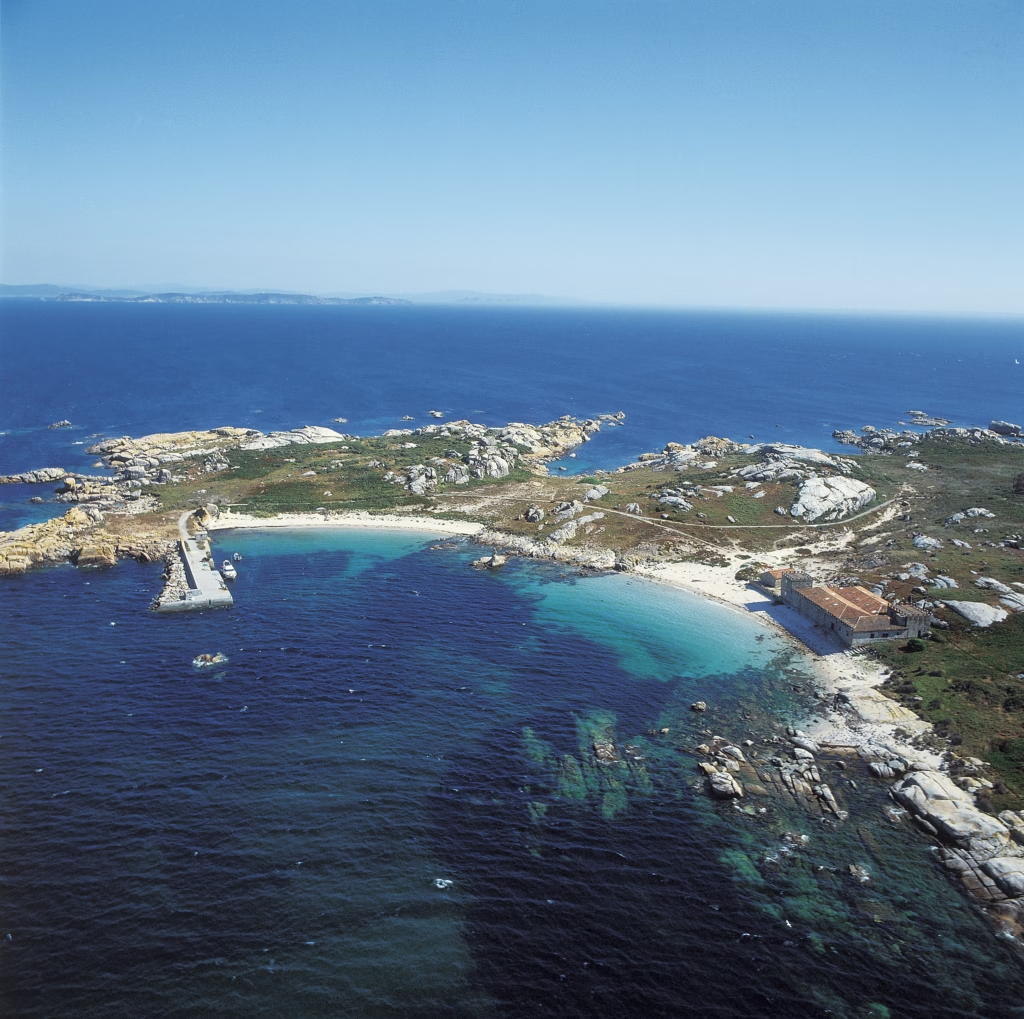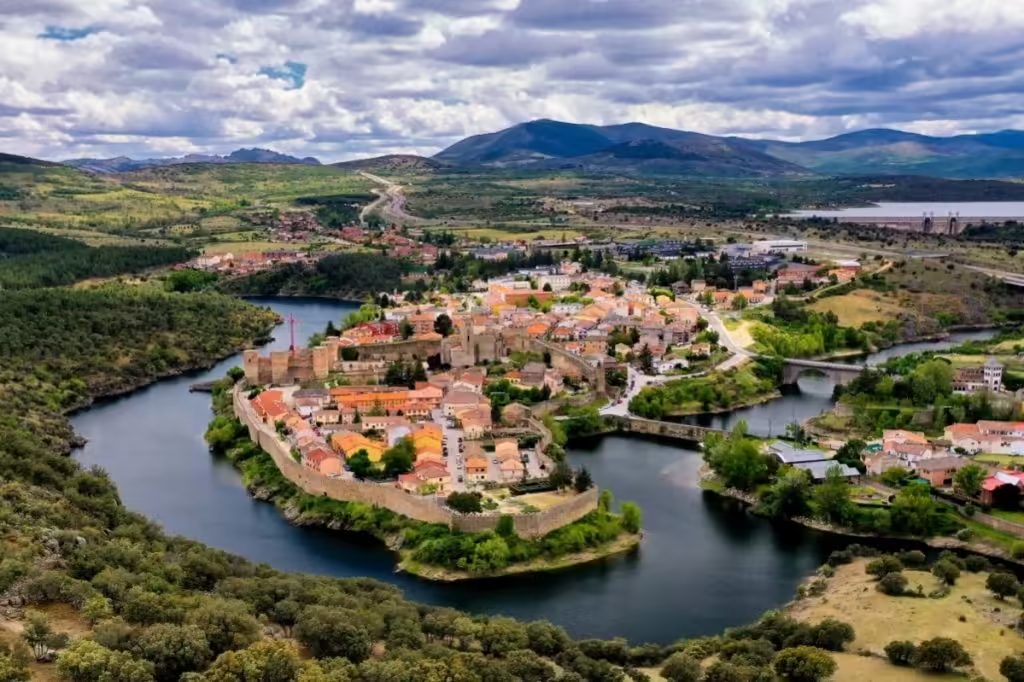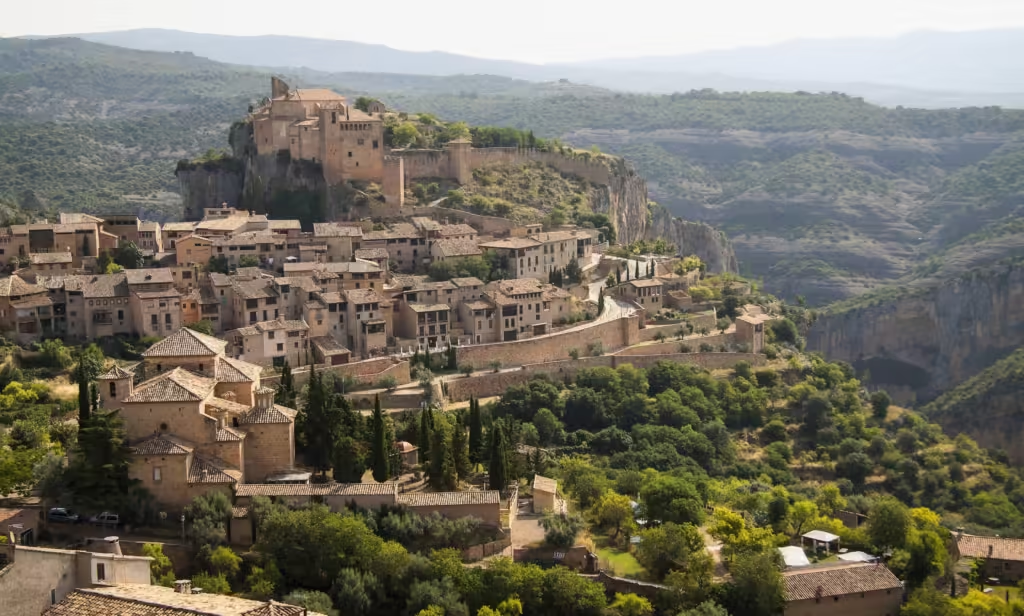Salvora Island (Illa de Sálvora) is a pristine destination in Galicia, Spain. It belongs to the Atlantic Islands of Galicia National Park and sits at the entrance of the Ría de Arousa in the Rías Baixas region. Its unspoiled beaches, crystal-clear waters, and rich biodiversity make it an unmissable stop for nature enthusiasts. This comprehensive guide will help you discover Salvora’s fascinating history, plan your visit, and learn essential travel tips.

Introduction to Salvora Island
Salvora Island is renowned for its untamed beauty. It is surrounded by rocky shores and vibrant marine life. Part of its enchantment lies in its isolation. Unlike many other popular islands, Salvora has never been heavily developed for tourism. Today, it is safeguarded under the Atlantic Islands of Galicia National Park, protecting its stunning environment for future generations.
A Protected Natural Environment
The island’s natural environment is a major draw for visitors. Breathtaking views, hidden coves, and lush flora await those who explore its coastal pathways. The Atlantic Islands of Galicia National Park imposes strict conservation rules, ensuring that Salvora retains its idyllic landscapes. This commitment to environmental preservation helps sustain a balanced ecosystem. It also allows the island’s animal life to thrive in harmony.
Part of the Rías Baixas Region
The Rías Baixas is famous for its gastronomic delights and scenic coastal towns. Salvora Island sits near the mouth of the Ría de Arousa. This wide estuary supports many fishing villages and vibrant tourist spots. It is also where you can catch a boat to visit Salvora. Exploring this enchanting region gives you insight into Galicia’s cultural heritage. You will also enjoy local seafood and quality Albariño wines.
Salvora’s Rich History
Salvora’s history goes beyond its status as a protected natural haven. In the past, people attempted to inhabit the island to capitalize on fishing. The remnants of abandoned houses and an old settlement remain as testaments to these endeavors. Although permanent habitation did not succeed, traces of these early attempts are still visible today.
A Lighthouse with Stories
A key historical landmark on Salvora is its stone lighthouse, built in the 19th century. It stands atop the island’s granite cliffs, guiding ships through treacherous waters. Many stories have emerged around the lighthouse keepers and their families. The secluded life on the island tested their resilience, as supplies and communication with the mainland were scarce. Although automated today, the lighthouse remains a significant piece of Salvora’s living history.
Legends and Myths
Galicia is steeped in folklore, and Salvora Island is no exception. Tales of mermaids, hidden treasures, and sea spirits abound. Local legends often depict the island as a place where nature’s forces hold sway over human affairs. These myths add to the island’s allure, fueling visitors’ imaginations as they wander its deserted shores.
Top Things to Do on Salvora Island
Salvora’s charm lies in its simplicity. This island is perfect for those seeking a respite from urban stress. Outdoor activities and peaceful strolls along deserted beaches are among its highlights.
Guided Hiking Tours
Guided hiking tours are the best way to explore Salvora. The island’s authorities require visitors to follow designated paths. These routes offer spectacular views of rocky inlets and the open sea. The main trail typically passes the abandoned village, giving you a glimpse into the island’s past. Experienced guides offer insights into local flora, fauna, and geology. They also emphasize the need to respect the island’s conservation rules.
Birdwatching and Wildlife Encounters
Salvora Island’s remote location creates a haven for seabirds. Birdwatchers can spot cormorants, seagulls, and European shags. Marine life also flourishes here, thanks to the island’s protected status. The crystal-clear waters host fish, octopuses, and other creatures that find shelter among underwater rocks. While snorkeling is not always included in tours, some authorized visits allow you to admire these vibrant aquatic habitats.
Beach Relaxation and Photography
Salvora’s beaches exude tranquility. The coarse white sand sparkles under the summer sun, contrasting with the turquoise sea. A leisurely walk along these shores reveals granite boulders shaped by centuries of tides. Photographers are in for a treat. The interplay of light and rock formations sets the stage for compelling nature shots. Sunbathing is possible, but facilities on the island are limited. Bring water, snacks, and sun protection to make the most of your visit.
How to Get to Salvora
Authorized Boat Tours
Because Salvora Island is part of the Atlantic Islands of Galicia National Park, access is regulated. Visiting on your own vessel is not permitted without official authorization. Most tourists arrive via organized boat tours. These tours operate from coastal towns such as O Grove, Portonovo, Ribeira, and Cambados. Each operator offers a variety of packages, often including a guided walk on the island. Booking in advance is highly recommended. Demand can outstrip supply during peak summer months.
Departure Points in Ría de Arousa
Ría de Arousa is dotted with fishing ports and marinas. These areas connect visitors to Salvora. Santa Uxía de Ribeira is a popular departure point. O Grove and Illa de Arousa are also common. Each port boasts a unique charm. If possible, arrive an hour before departure. This allows time to purchase tickets, board the vessel, and settle in comfortably.
Travel Time and Scenic Views
Travel time to Salvora averages between 30 and 60 minutes. It depends on the departure port and the weather. The journey itself offers sweeping views of Galicia’s coastline, dotted with rocky islets and distant mountains. Pack a camera or binoculars to capture the vibrant seabirds and passing fishing boats.
Where to Stay near Salvora
You cannot stay overnight on Salvora Island itself. There are no hotels or camping facilities. Instead, choose accommodation on the mainland in charming Galician towns. Places like Ribeira, A Pobra do Caramiñal, and O Grove provide a range of lodging options. Many are steps away from beautiful beaches and seafood restaurants. You can also explore the cultural richness of these towns and use them as a home base for day trips to Salvora.
Popular Accommodation Types
Hotels and Guesthouses: Ideal for travelers who want comfortable amenities. They often feature on-site restaurants and tours.
Vacation Rentals: A convenient choice for families or larger groups seeking more space and privacy.
Rural Houses (Casas Rurales): Experience authentic Galician living. Enjoy rustic architecture and a cozy atmosphere.
Best Time to Visit Salvora
June to early September is the most popular period to visit Salvora Island. Warm temperatures and calmer seas allow for pleasant boat trips. You may also find more tour operators running daily services. If you prefer cooler weather and fewer crowds, consider late spring or early autumn. During these times, you will still find moderate temperatures. However, be aware that some tour companies reduce their schedules in off-peak months.
Essential Traveler Tips for Salvora Island
Wear Appropriate Footwear: Salvora’s terrain can be rocky and uneven. Comfortable shoes are essential for guided walks and shore explorations.
Carry Sun Protection: The island lacks much shade, so a hat and sunscreen will prevent sunburn.
Bring Water and Snacks: Salvora does not have shops or bars. Stay hydrated and pack a small snack for your excursion.
Follow Conservation Rules: Respect the environment by staying on marked trails. Never leave trash behind.
Listen to Your Guide: Guides inform you about local regulations, wildlife, and historical details. Their advice ensures a safe and respectful visit.
FAQs about Salvora Island
1. Do I need a permit to visit Salvora Island?
Yes. Salvora Island is part of the Atlantic Islands of Galicia National Park. Access is strictly regulated to protect its environment. Most visitors arrive through authorized boat tours. These tours secure the necessary permits on your behalf.
2. Can I visit Salvora independently with my own boat?
Private boat access is possible only with official permission. This is not easily obtained, as the park restricts the number of visitors. In most cases, people prefer joining guided tours that depart from nearby coastal towns. 3. Are there any restaurants or cafes on Salvora Island?
3 No. Salvora Island has no restaurants, cafes, or convenience stores. Bring enough water, snacks, and any other essentials for your trip. Once you leave the mainland, you will not find opportunities to purchase supplies.
4. How long does a typical tour of Salvora last?
A standard tour usually lasts between three and four hours, including boat travel time. You will have a guided walk on the island, allowing you to see the lighthouse, abandoned village, and scenic beaches. Some tours may extend to half a day, depending on your operator’s itinerary.
5. Is Salvora Island suitable for families with children?
Yes, but parents should note that the terrain can be rugged. Keep an eye on younger children during the walking tour. Make sure they have the right footwear and are prepared for outdoor conditions. The island’s beaches are peaceful, but there are no lifeguards.
6. Which other islands are part of the Atlantic Islands of Galicia National Park?
The park includes the Cíes Islands, Ons Island, Cortegada Island, and Salvora Island. Each location offers a distinct experience. Cíes is known for its Rodas Beach, often called one of the best beaches in the world. Ons has lively fishing traditions, while Cortegada boasts thick forests. Salvora remains the least visited, perfect for travelers who crave solitude.
7. Can I swim or snorkel around Salvora Island?
Yes, in designated areas and if conditions allow. However, some tours may not permit swimming due to safety or conservation rules. If you plan to snorkel, ask your tour operator about regulations. Always be mindful of strong currents and respect protected marine life.
8. Is Salvora accessible year-round?
Technically, yes, but tours operate primarily in spring and summer. Atlantic storms and rough seas can limit travel outside peak months. Contact tour companies in advance if you wish to visit during off-peak seasons.
Conclusion
Salvora Island embodies the natural splendor of the Atlantic Islands of Galicia National Park. Its tranquil beaches, diverse wildlife, and meaningful history captivate travelers who seek genuine connections with nature. Guided tours provide access while preserving its fragile ecosystem, ensuring that Salvora remains a hidden gem in Galicia’s Rías Baixas.
Your journey to Salvora starts with a short boat ride from nearby ports like Ribeira, O Grove, or Illa de Arousa. Once you set foot on the island, you enter a realm where time seems to stand still. Ancient ruins, a steadfast lighthouse, and granite cliffs create a distinctive landscape unlike anywhere else in Spain. Bring comfortable shoes, a camera, and an open mind—Salvora’s magic lies in its serene stillness and abundant natural wonders.
Venture along marked trails, capture photographs of seabirds, and marvel at the timeless echoes of human resilience. Salvora invites you to embrace the gentle rhythm of Galician life and immerse yourself in a protected paradise. Pack your sense of adventure, follow the guidelines, and leave only footprints behind. By doing so, you help safeguard Salvora Island for the generations to come.

